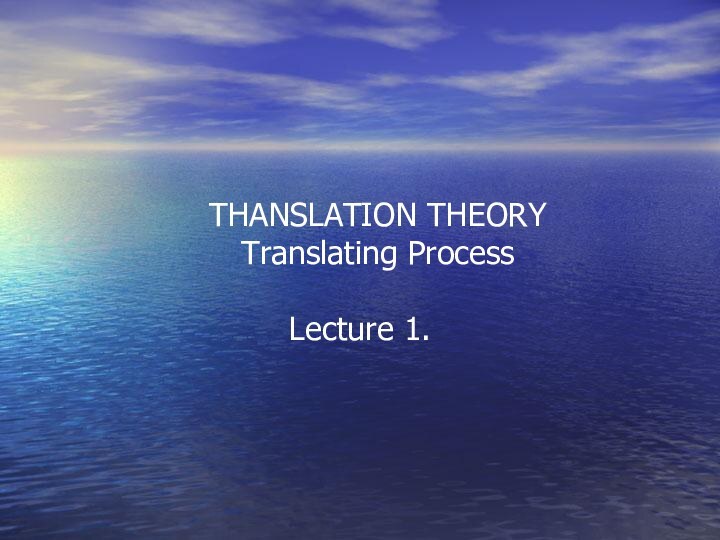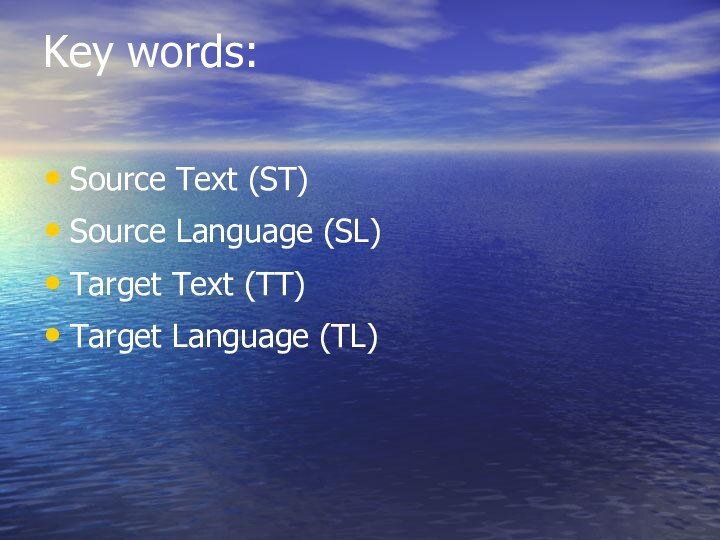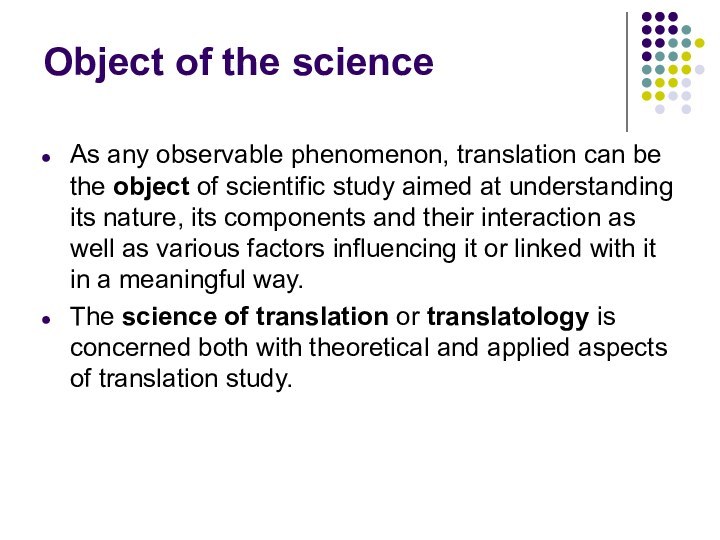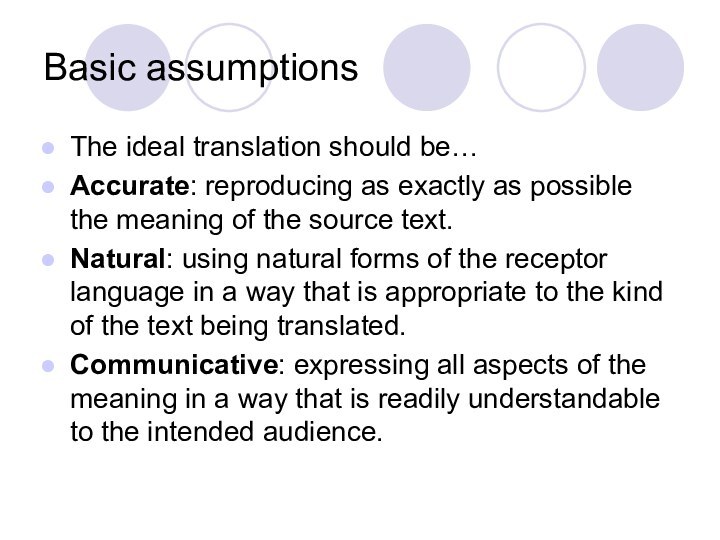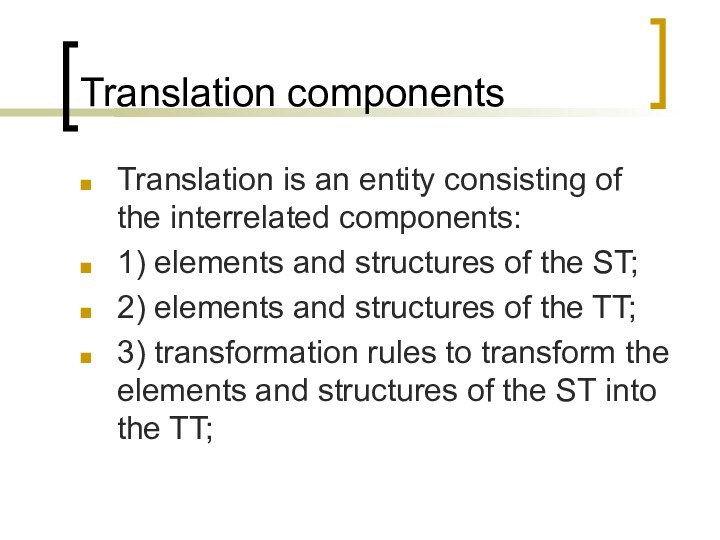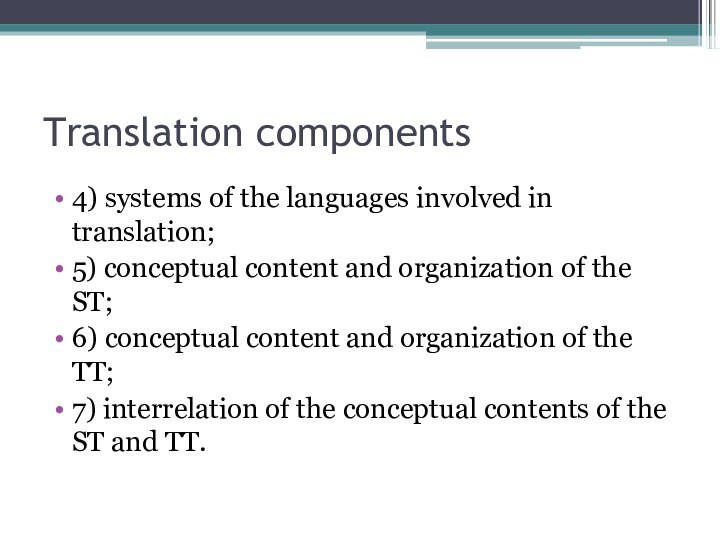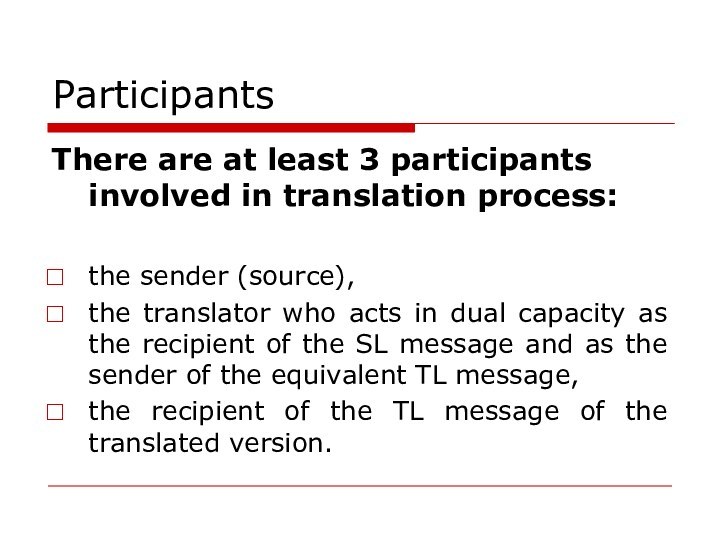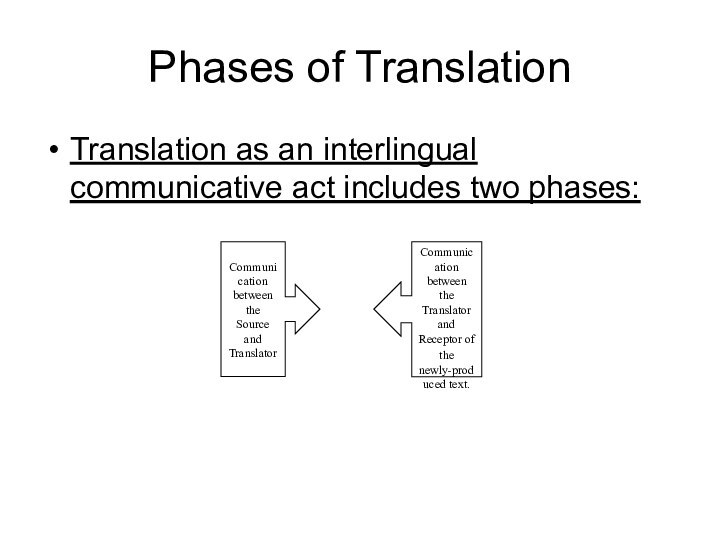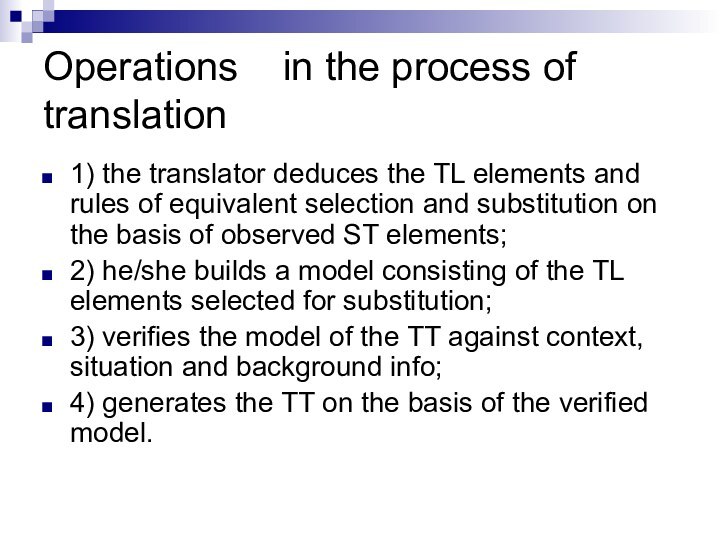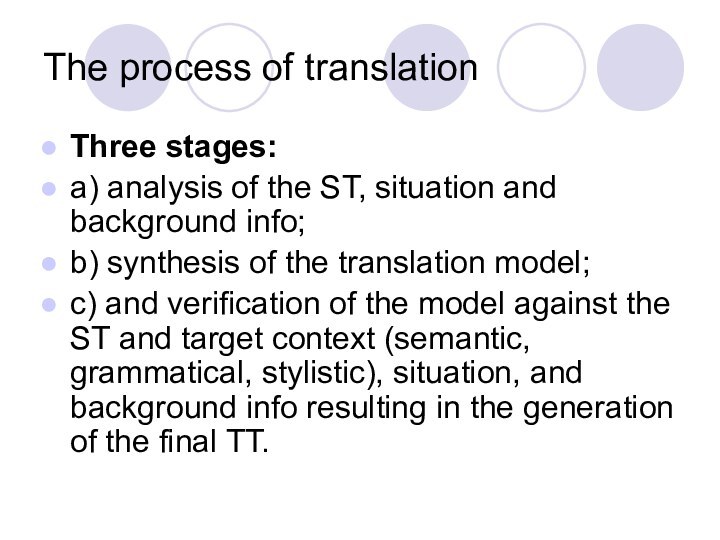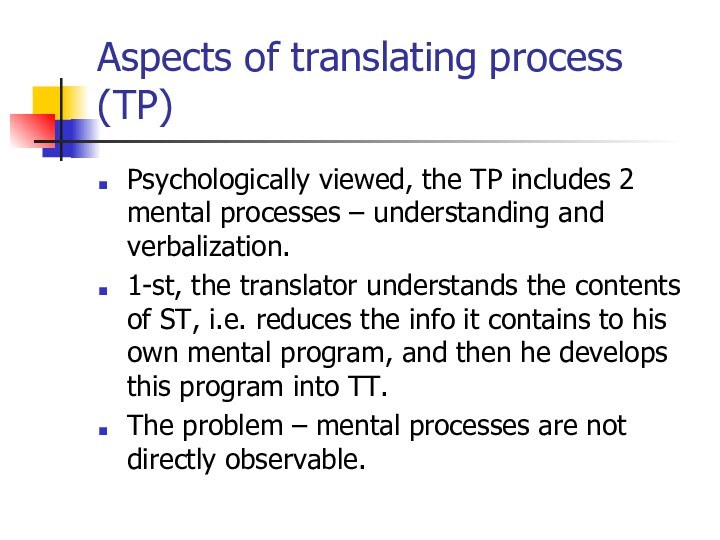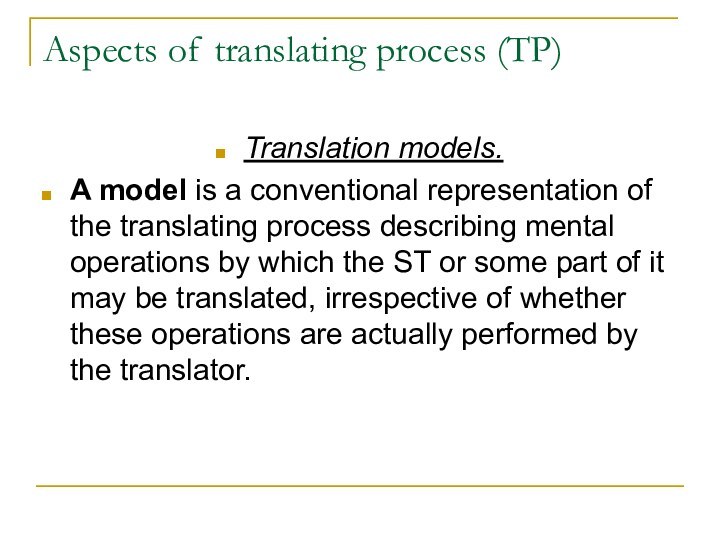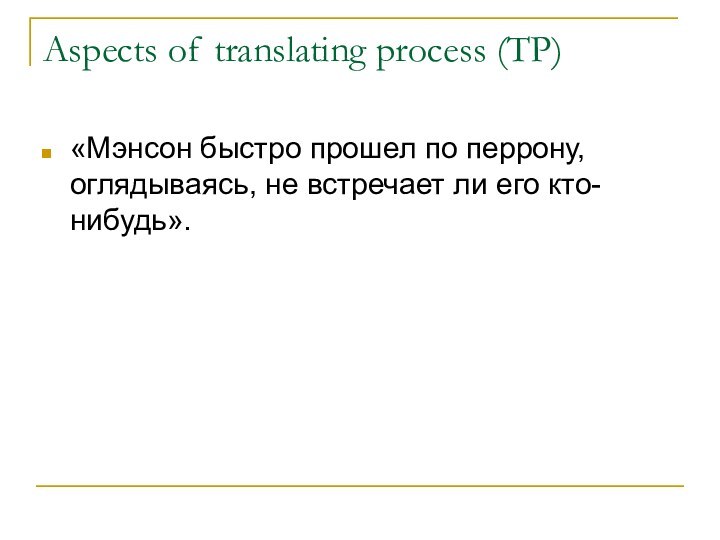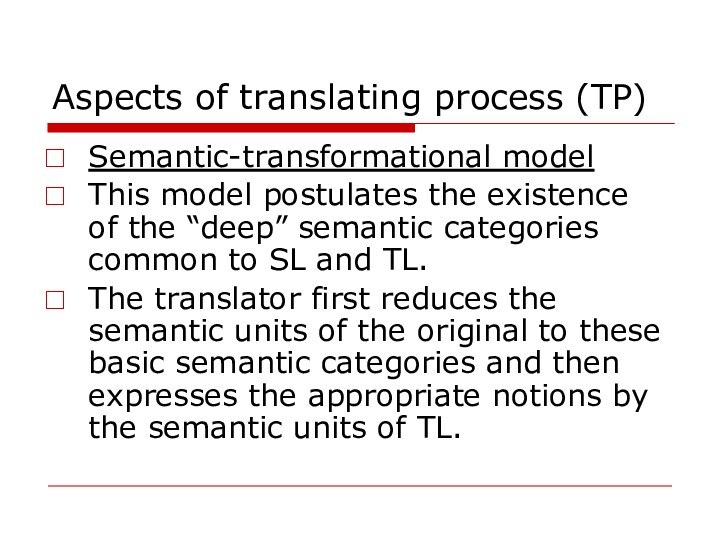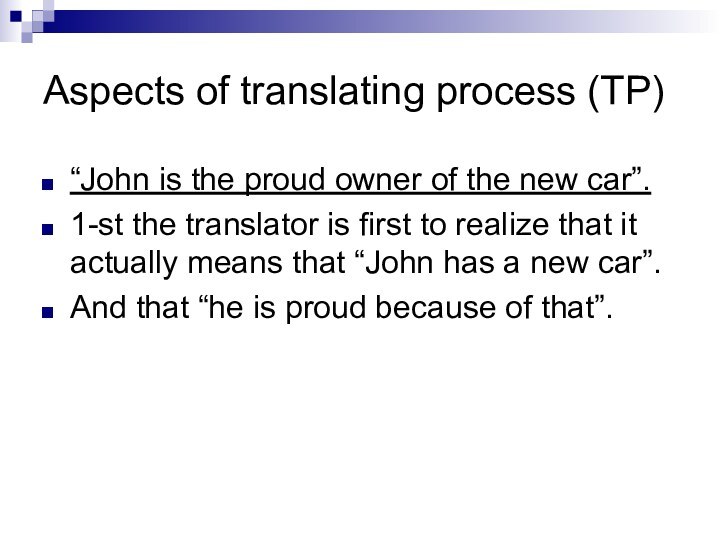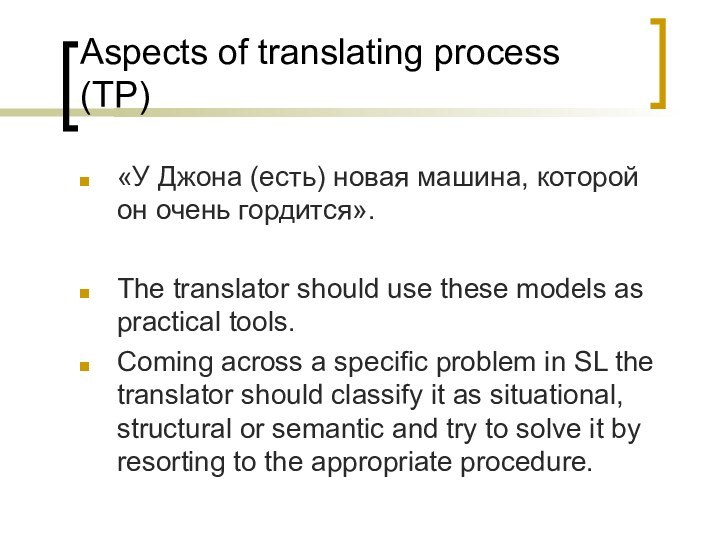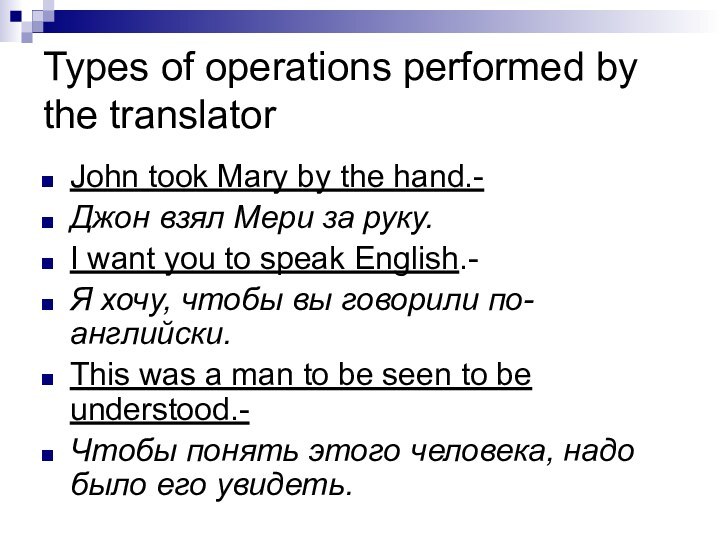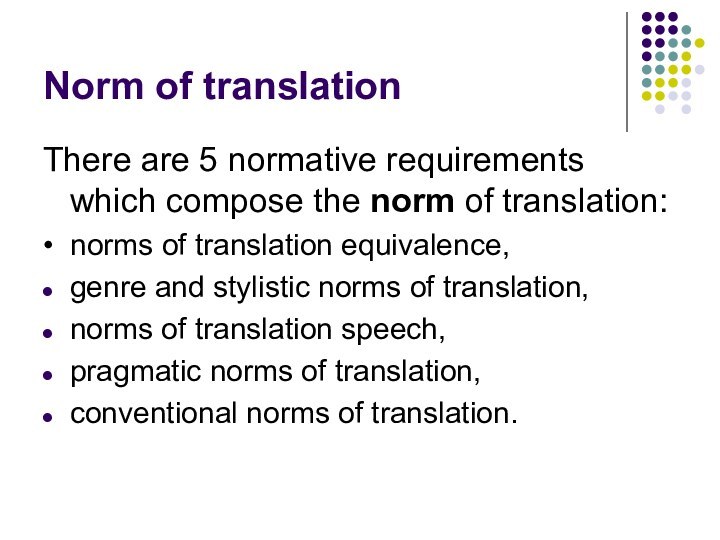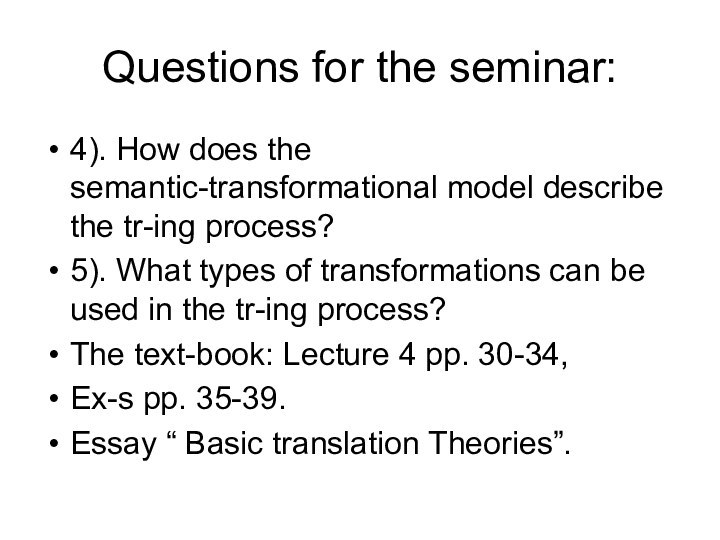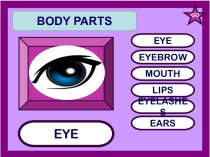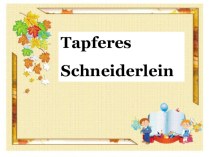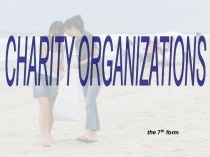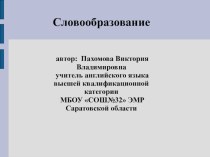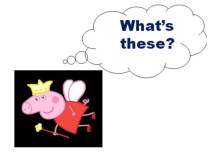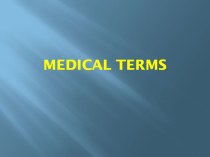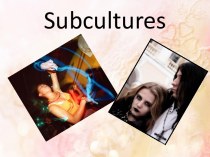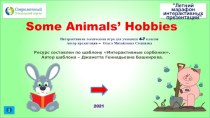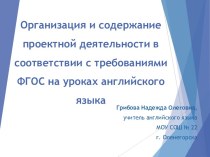Слайд 2
Main items:
Introduction: aims and structure of the course.
Translation studies, linguistics and literary theory.
Terms and concepts.
Reading:
Peter Newmark “A textbook on Translation” 1988: Introduction; Pp. 1-21;
Susan Bassnett “Translation Studies”1991: 1-21.
Слайд 3
Main items:
Description of the Process of Translating
Participants and
Phases of Translating
Modeling of Translating
Translation Methods
Слайд 4
Key words:
Source Text (ST)
Source Language (SL)
Target Text (TT)
Target
Language (TL)
Слайд 5
Translation
Translation- is a transfer of meaning across cultures.
More specifically, translation is the process and the result
of creating in a target, or translating, language (TL) a text which has approximately the same communicative value as the corresponding text in the source language (SL).
Слайд 6
The aim of translation
The aim of translation: to
produce the text or message in the TL which
is equivalent to the original text or message in the SL both semantically and pragmatically.
In translation we deal with two languages (two codes) and to verify the info they give us about the extralinguistic objects we should consider extralinguistic situation, and background information.
Слайд 7
Basic assumptions
This target text (TT, that is the
translation) is not fully identical with ST as to
its form or content due to the limitations imposed by the formal and semantic differences between the source language (SL) and TL.
Слайд 8
Object of the science
As any observable phenomenon,
translation can be the object of scientific study aimed
at understanding its nature, its components and their interaction as well as various factors influencing it or linked with it in a meaningful way.
The science of translation or translatology is concerned both with theoretical and applied aspects of translation study.
Слайд 9
Basic assumptions
The ideal translation should be…
Accurate: reproducing as
exactly as possible the meaning of the source text.
Natural: using natural forms of the receptor language in a way that is appropriate to the kind of the text being translated.
Communicative: expressing all aspects of the meaning in a way that is readily understandable to the intended audience.
Слайд 10
Translation components
Translation is an entity consisting of the
interrelated components:
1) elements and structures of the ST;
2) elements
and structures of the TT;
3) transformation rules to transform the elements and structures of the ST into the TT;
Слайд 11
Translation components
4) systems of the languages involved in
translation;
5) conceptual content and organization of the ST;
6) conceptual
content and organization of the TT;
7) interrelation of the conceptual contents of the ST and TT.
Слайд 12
Participants
There are at least 3 participants involved in
translation process:
the sender (source),
the translator who acts
in dual capacity as the recipient of the SL message and as the sender of the equivalent TL message,
the recipient of the TL message of the translated version.
Слайд 14
Phases of Translation
Translation as an interlingual communicative act
includes two phases:
Слайд 15
Operations in the process of translation
1) the
translator deduces the TL elements and rules of equivalent
selection and substitution on the basis of observed ST elements;
2) he/she builds a model consisting of the TL elements selected for substitution;
3) verifies the model of the TT against context, situation and background info;
4) generates the TT on the basis of the verified model.
Слайд 16
The process of translation
Three stages:
a) analysis of the
ST, situation and background info;
b) synthesis of the translation
model;
c) and verification of the model against the ST and target context (semantic, grammatical, stylistic), situation, and background info resulting in the generation of the final TT.
Слайд 17
Aspects of translating process (TP)
Psychologically viewed, the TP
includes 2 mental processes – understanding and verbalization.
1-st, the
translator understands the contents of ST, i.e. reduces the info it contains to his own mental program, and then he develops this program into TT.
The problem – mental processes are not directly observable.
Слайд 18
Aspects of translating process (TP)
Translation models.
A model is
a conventional representation of the translating process describing mental
operations by which the ST or some part of it may be translated, irrespective of whether these operations are actually performed by the translator.
Слайд 19
Aspects of translating process (TP)
There are such models
of translating process: 1) the situational model and 2)
the semantic-transformational model.
The existing models of the translating process are based on:
1) on the identity of the situations described in the original text and in the translation;
Слайд 20
Aspects of translating process (TP)
2) is based on
the similarity of basic notions and nuclear structures in
different languages.
In other words, the translator actually makes a mental travel from the original to some interlingual level of equivalence and then further on to the text of translation.
Слайд 21
Aspects of translating process (TP)
Situational model
The process goes
from the text in one language through the extralinguistic
situation to the text in another language.
The translator first understands what the original is about and then says “the same things” in TL.
Слайд 22
Aspects of translating process (TP)
“Manson walked quickly down
the platform, searching eagerly for some signs of welcome.”
The
main character came by train to a new place of work. The man was alone in a strange place and couldn’t expect any welcome committee. Obviously, he just wanted to see whether anyone was there to meet him.
Слайд 23
Aspects of translating process (TP)
«Мэнсон быстро прошел по
перрону, оглядываясь, не встречает ли его кто-нибудь».
Слайд 24
Aspects of translating process (TP)
Semantic-transformational model
This model postulates
the existence of the “deep” semantic categories common to
SL and TL.
The translator first reduces the semantic units of the original to these basic semantic categories and then expresses the appropriate notions by the semantic units of TL.
Слайд 25
Aspects of translating process (TP)
“John is the proud
owner of the new car”.
1-st the translator is first
to realize that it actually means that “John has a new car”.
And that “he is proud because of that”.
Слайд 26
Aspects of translating process (TP)
«У Джона (есть) новая
машина, которой он очень гордится».
The translator should use these
models as practical tools.
Coming across a specific problem in SL the translator should classify it as situational, structural or semantic and try to solve it by resorting to the appropriate procedure.
Слайд 27
Aspects of translating process (TP)
“He is a poor
sleeper”.
An attributive group can’t be directly transferred into Russian.
The translator can find that the transformational model will do the trick for him here.
So he should transform the attributive group into a verb-adverb phrase:
«Он плохо спит».
Слайд 28
Different types of operations performed by the translator:
1)
the first group of operations (transformations) is characterized by
imitation of the form of a word (translational transcription) or of a collocation (creates a blueprint collocation in TL by using a loan translation).
«Эскалация, консенсус»
«Мозговой трест»(brain trust), «работа по правилам» (work-to-rule), «люди доброй воли»(people of good will).
Слайд 29
Types of operations performed by the translator
2). The
second group of operations includes all types of lexical
transformations invoking certain semantic changes.
As a result, the meaning of a word or word combination in ST may be more specific, more general or somewhat modified as a way to discovering an appropriate equivalent in TL.
Слайд 30
Types of operations performed by the translator
The equivalent
with a more general meaning: I packed my two
Gladstones.
«Я упаковал свои два чемодана».
Слайд 31
Types of operations performed by the translator
3). The
third group of translating procedures comprises all types of
transformations involving units of SL grammar.
The translator may solve his problems by preserving the syntactic structure of the ST and using the analogous TL grammatical forms or a “word-for-word translation”.
Слайд 32
Types of operations performed by the translator
John took
Mary by the hand.-
Джон взял Мери за руку.
I want
you to speak English.-
Я хочу, чтобы вы говорили по-английски.
This was a man to be seen to be understood.-
Чтобы понять этого человека, надо было его увидеть.
Слайд 33
Norm of translation
There are 5 normative requirements which
compose the norm of translation:
• norms of translation equivalence,
genre
and stylistic norms of translation,
norms of translation speech,
pragmatic norms of translation,
conventional norms of translation.
Слайд 34
Translation difficulties
There are 3 types of translation difficulties:
peculiarities
of language units semantics,
discrepancies of world perception,
discrepancies of realias.
Слайд 35
Methods of research in translation
There are 4 types
of comparative analysis used in the modern theory of
translation:
comparing the translation text with its original,
comparing several translations of one and the same text prepared by different translators,
comparing translations with original texts in the language of translation,
comparative analysis of parallel texts in the source and target languages.
Слайд 36
Questions for the seminar:
Topics for discussion:
1). What is
the tr-ing process? What mental processes make up the
tr-ing process?
2). What is the model of tr-n? How can tr-n models be classified?
3). How does the situational model describe the tr-ing process?
